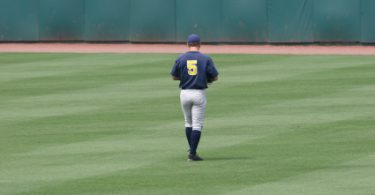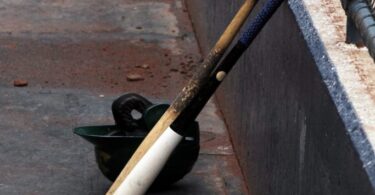This article follows up on our Day in the Life of a D1 Baseball Player and explains what a typical D1 practice looks like through the eyes of a former D1 player. This schedule lays out what a practice with a noon start time looks like.
11:30- Lunch
You are about to embark on a 3-hour practice followed by an hour and a half of weights and conditioning. What you put in your body before practice will play a role in how you perform in your training time.
12:00- Practice Plan
Most college programs will post a practice plan so players can see what they are going to be doing and where they need to be during each stage of practice. Three hours of practice is going to fly by and it is important to know what is going on so you can anticipate what is going to happen next and create smooth transitions.
12:05- Coach Talk
Coach will address what has been going on, what is going to happen that day, and what is coming up. This is the time to start preparing for practice and what you need to be working on.
12:10- Clear it
During this time, we spend about 1 to 2 minutes in complete silence. Everyone sits down or lays down and keeps to themselves where they can clear all of the outside noise and whatever does not apply to the practice for that day from their mind.
12:12- Stretching and Warm-up
You are going to put your body to the test for the next 4 1/2 hours and this prep time is much needed. You are no good to your team with a pulled hamstring or other injury. This is the time to take your body seriously. If you’re not careful, stretching can often turn into social hour where you simply go through the motions. You should really focus on getting your body ready for the work ahead.
12:20- Bands (pitchers) and Base running (hitters)
Pitchers: You may be given a program or you may be free to do as you want with your band work. Like stretching, this is a time to take seriously. During this time, you should make sure you do two things; 1) get your long-term arm-care maintenance in, and 2) get your arm feel ready to throw that day. Hitters: Base running is one of the most important and underappreciated aspects of the college game. Teams that run the bases well can separate themselves from the rest. You should be working towards the small victories. Cutting down milliseconds on the base paths can translate into wins.
12:35- Catch
Catch play is similar to your preparation work. It is very easy to go through the motions while playing catch, but what separates the good player from the great player is attention to details, and there is no more important time to be focused than during catch play. It is the single most important aspect of your defensive work. We break down what it means to play quality, focused catch position-by-position here. This could be a position player using catch time to focus on his footwork, getting the ball out of his glove, or even position specific throws. For a pitcher, this could be focusing on trying to hit a little target on their catch partner every throw or working on another mechanical issue with the legs, landing foot, or anything else. Everyone has something they can and should be working on during catch play to get better.
12:50- Individuals (Indos)
During “indos,” the team splits up by position to work on position-specific drills. Pitchers are most likely working on PFPs (Pitcher Fielding Practice). You can never do ‘too many’ PFPs. On a given day, this might include fielding come-backers and throwing to a base, fielding bunts, covering first, covering home, or any other defensive responsibility a pitcher might have come up in game play. All of these important plays can help your team win a game. Outfielders often have a set of daily drills that focus on fundamentals before working more in-depth on a particular aspect of defense and getting fly ball reps in. Common areas of focus are things like drop steps, tracking fly balls, communicating, or throwing to bases. Infielders often go through a similar drill progression as outfielders. After a set of everyday drills to emphasize fundamentals, infielders will work on ground balls, turning two, footwork, fly balls, covering bases, and anything else they may be expected to do in the game.
1:20- Full Team Drill
After the indo portion of practice, the entire team will come together and complete one or two drills as an entire team. This could mean going over 1st and 3rd defense/offense, bunt defense, situational defense, double plays, popup priority, or run downs. A little secret…the key to these drills (at any position) is quality communication with your team.
1:45- Batting Practice
During a college batting practice, there are many moving parts. The hitters are broken up into groups. For us, there was one group hitting on the field, one group on defense, one group at a bunting station and one group in the cages. At all of these stations, there are few coaches, so it is up to you and your teammates to hold each other accountable to get your work in. Hitting on the field consists of a hitting plan specific to that day. This could be bunting, bunting for a hit, hit and runs, moving a runner from second to third, third to home, gap to gap, and a hard hit round. All of these are aimed at preparing hitters for game situations. As for pitchers, you are shagging balls in the outfield or hitting ground balls to the fielders in between swings.
3:00- Jobs
After practice is finished, everyone has a job to make sure that the field is ready for the next day’s practice or game. This consists of prepping the mound, cleaning up the cage, breaking down any machines that were being used, raking the base lines, collecting clods of dirt that are on the grass, dragging and watering the field. If you take care of your field, it will take care of you.







